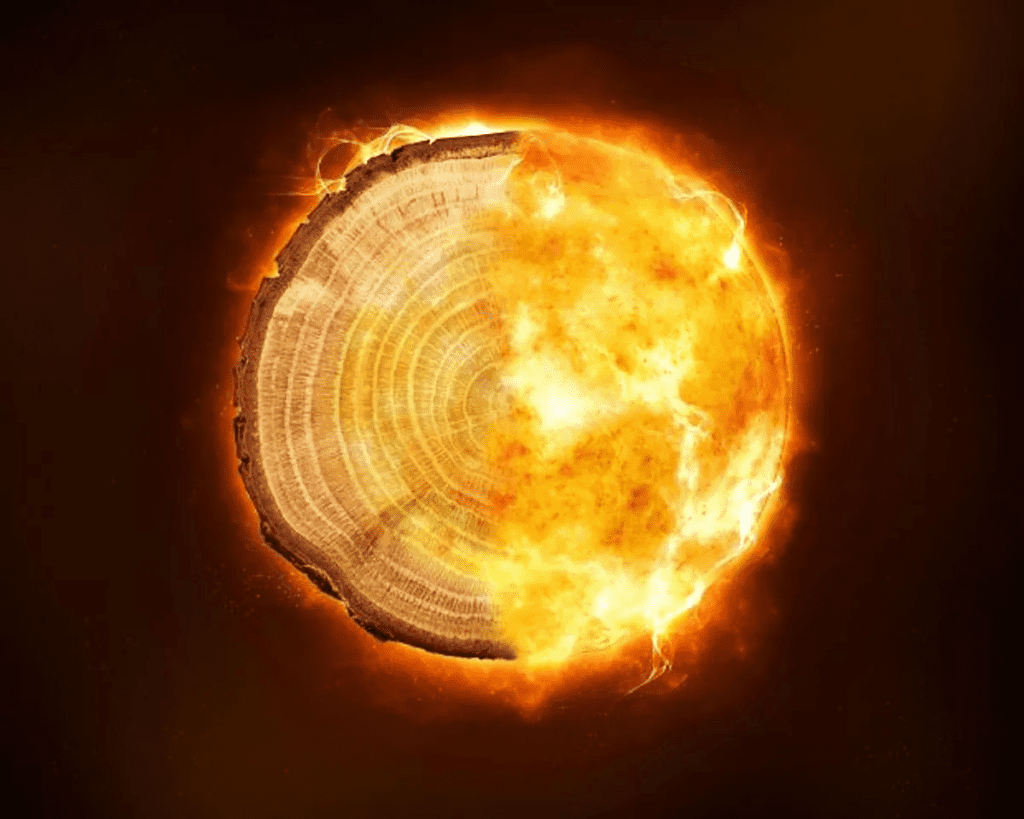Some things about astronomy we understand pretty well — and then there are Miyake events.
Mysterious bursts of radiation that bursts of cosmic radiation, known as Miyake Events, seem to be happening every thousand years or so, but we don’t really know what’s triggering them.
“We don’t know what causes them,” says Benjamin Pope, from the University of Queensland’s School of Mathematics and Physics.”
“The leading theory is that this is a kind of extreme solar “superflare” 50-100 times bigger than any other flare ever recorded. If this is the case, and one of these went off today, it would be catastrophic for satellites, power grids, telecommunications,” Pope explains.
But it might not be the sun.
“Alternatives have been proposed: supernovae, gamma-ray bursts, magnetar bursts (flares from neutron stars), and we really don’t know very much about this to be honest – which is alarming for something potentially so risky,” the researcher explains in an email.
To get more information about these bursts, Pope assembled a small team to analyze all the data simultaneously with new statistical and physics software that they developed — and made available open source, for anyone to use. They particularly focused on tree rings.

While tree rings aren’t the only way to record this phenomenon (they also show up in some isotopes as well), they’re a good way to study Miyake events. Basically, when radiation hits the atmosphere, it produces a radioactive isotope (an alternative form of an atom) called carbon-14, which produces an annual record of radiation. This carbon-14 is circulated through the global carbon cycle into the oceans, the forests, and all the organisms on Earth (including you or me) and, of course, reaches tree rings. What makes tree rings so important here is that they can be dated accurately, and some trees have been buried and well-preserved for thousands of years. “So the tree rings are like the world’s biggest observatory, holding a record of cosmic radiation going back millennia,” Pope says.
Essentially, the authors of the study didn’t present any new data. Instead, they took all the existing published tree ring data and wrote the code to model the physics and statistics of all six known Miyake events all at once.

The main focus was looking at correlations between solar activity and the occurrence of Miyake events — but there was no correlation.
“We’ve shown they’re not correlated with sunspot activity, and some actually last one or two years,” says first author UQ undergraduate math student Qingyuan Zhang. “Rather than a single instantaneous explosion or flare, what we may be looking at is a kind of astrophysical ‘storm’ or outburst.”
This doesn’t necessarily mean that the Sun isn’t causing these events, but it does make the question much more complicated, and casts a new light on what was already a puzzling event.
“Bearing in mind that these are small numbers, [we found] that they don’t have a particularly strong relationship to the solar cycle. A couple of them have long durations (which is not expected for solar flares), and we don’t see much of a trend with latitude (solar bursts are expected to affect the poles more).”
“So we’re not saying it’s not the sun, it probably still is (in my opinion), but [I’m] really saying that the situation is a lot more complicated than before, and the question is a lot more open,” Pope tells ZME Science.
Ultimately, we have a better way of studying these events, but we still don’t really know what causes them and we have no way to predict them. Based on existing data, there’s a roughly 1% chance of seeing one over the next decade, and 1% is not that small of a probability given how much damage something like this can cause.
Pope calls for more research on this topic, and also mentions that the paper was a lot of fun to write and thanks students Qingyuan Zhang, Utkarsh Sharma, and Jordan Dennis, who made “really great contributions”.
The research is published in Proceedings of the Royal Society A.


